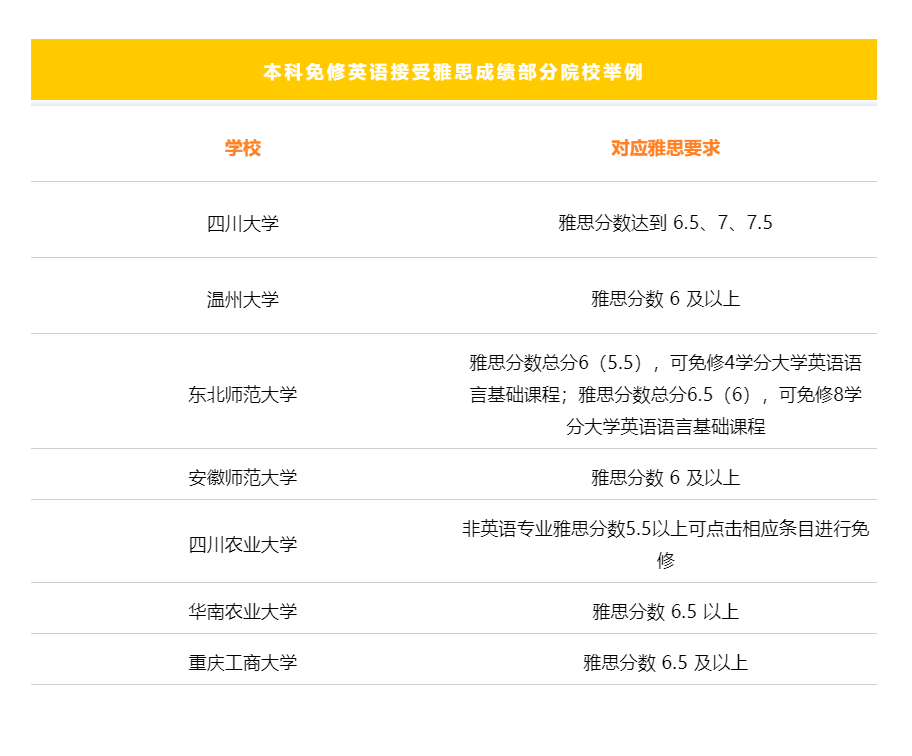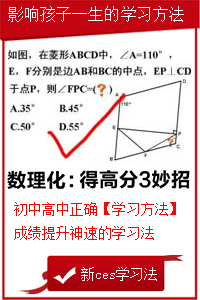托福阅读题型较多,因此在解题时面对不同题型不能一概而论用相同方式解答,这样解题效率往往是比较低的。今天小编给大家带来了托福阅读题型应对技巧实例分析 infer推理题答题思路精讲,希望可以帮助到大家,下面小编就和大家分享,来欣赏一下吧。
托福阅读题型应对技巧实例分析 infer推理题答题思路精讲
托福阅读推理题题型介绍
托福阅读推理题可分为两类:有共性的推理题和无共性的推理题
这里所谓的有共性推理题就是说题干中有和原文内容相同的关键词(也叫线索)。根据关键词回原文定位,然后进行推理。一般来说,大多数的推理题都属于这类题目。对于无共性的推理题,也就是题干中无线索,一般使用排除法,即根据各个选项的关键词回原文定位,通过排除法得出正确答案。返回原文找信息点,采用排除法是解决这两类题型解决的共同策略。
托福阅读推理题解题信息点讲解
托福阅读解题需要注意这些信息点:
1. 日期和数字
2. 各类关键词
表示多少的副词: many , some, much of, several , a few ,most …;情态动词:may, can , could…;表示过去的:used to be , was, were , at one time, previously ;表示不是唯一的: not only ,not exclusively等。
托福阅读推理题3种具体解题思路分析
1、一般对比推理:根据两个事情的对比特征,问其中一个事物的特征,只要将与之形成对比的另外一个事情的特征否定掉就可以。
2、时间对比推理:在这种推理中,一般有两个形成对比的时间段,它们所具有的特征一般相反。当题干问一个时间段的特征时,只要将与之相反的时间段的特征否定掉就可以了。
3、集合概念推理 :一个大的集合的两个方面形成对比,两者之间存在着互补性关系,也就是一个的增加意味着另一个的减少。反之,相同。
托福阅读推理题解题思路实例讲解
上面说的可能比较抽象,我们来看一个例子:
例如:Both the number and the percentage of people in the United States involved in nonagricultural pursuits expanded rapidly during the half century following the civil war, with some of the most dramatic increases occurring in the domains of transportation, manufacturing, and trade and distribution.
What can be inferred from the passage about the agricultural sector of the economy after the Civil War?
(A) New technological developments had little effect on farmers.
(B) The percentage of the total population working in agriculture declined.
(C) Many farms destroyed in the war were rebuilt after the war.
(D) Farmers achieved new prosperity because of better rural transportation.
文中指出:非农业人口的数量和比例都增加了。由此可知农业人口的数量和比例下降,所以(B)为正确答案。
托福阅读素材之空气污染问题
Air Pollution
托福阅读材料推荐:空气污染问题
Comes From Many Sources
Here's what you need to know about the warming planet, how it's affecting us, and what's at stake.
Smog hanging over cities is the most familiar and obvious form of air pollution. But there are different kinds of pollution—some visible, some invisible—that contribute to global warming. Generally any substance that people introduce into the atmosphere that has damaging effects on living things and the environment is considered air pollution.
Carbon dioxide, a greenhouse gas, is the main pollutant that is warming Earth. Though living things emit carbon dioxide when they breathe, carbon dioxide is widely considered to be a pollutant when associated with cars, planes, power plants, and other human activities that involve the burning of fossil fuels such as gasoline and natural gas. In the past 150 years, such activities have pumped enough carbon dioxide into the atmosphere to raise its levels higher than they have been for hundreds of thousands of years.
Other greenhouse gases include methane—which comes from such sources as swamps and gas emitted by livestock—and chlorofluorocarbons (CFCs), which were used in refrigerants and aerosol propellants until they were banned because of their deteriorating effect on Earth's ozone layer.
Another pollutant associated with climate change is sulfur dioxide, a component of smog. Sulfur dioxide and closely related chemicals are known primarily as a cause of acid rain. But they also reflect light when released in the atmosphere, which keeps sunlight out and causes Earth to cool. Volcanic eruptions can spew massive amounts of sulfur dioxide into the atmosphere, sometimes causing cooling that lasts for years. In fact, volcanoes used to be the main source of atmospheric sulfur dioxide; today people are.
Industrialized countries have worked to reduce levels of sulfur dioxide, smog, and smoke in order to improve people's health. But a result, not predicted until recently, is that the lower sulfur dioxide levels may actually make global warming worse. Just as sulfur dioxide from volcanoes can cool the planet by blocking sunlight, cutting the amount of the compound in the atmosphere lets more sunlight through, warming the Earth. This effect is exaggerated when elevated levels of other greenhouse gases in the atmosphere trap the additional heat.
Most people agree that to curb global warming, a variety of measures need to be taken. On a personal level, driving and flying less, recycling, and conservation reduces a person’s "carbon footprint"—the amount of carbon dioxide a person is responsible for putting into the atmosphere.
On a larger scale, governments are taking measures to limit emissions of carbon dioxide and other greenhouse gases. One way is through the Kyoto Protocol, an agreement between countries that they will cut back on carbon dioxide emissions. Another method is to put taxes on carbon emissions or higher taxes on gasoline, so that people and companies will have greater incentives to conserve energy and pollute less.
托福阅读备考之文章考点整理
一、列举和并列句
列举指的是: First, Second, Third,等逐条列出。并列句是指: A , B and C ,即逐项列出。它们共同的特征是列出二点或三点以上的条目。该类型语言点常考的题型是“细节性问题”,主要有两种:
1. Which 题型
该题型只要求从并列的三顶中选一项作为答案,其它条目与题目无关。在这种情况下,往往题目的答案出自最后一个选项 。
2 . EXCEPT 题型
该题型俗称“三缺一”题型,即题目 4 个选项中有三个符合文章内容,剩下一个不符合,题目便是要求选出这个不符合文章内容的选项。例如: All of the following are mentioned as types of evidence concerning handedness EXCEPT -
这种题型只适合于考并列、列举句,这是因为它要求其三个选项一定是文章中出现的,也就是并列或列举之处。利用这一特点.我们在读文章的时候就可多留意,如看到并列、列举句,可预想其有可能被考到;如发现题目中有“三缺一”题型,则应到并列、列举处找答案。
二、否定及转折句
否定句是指带有 NO 或 NOT , NEVER 等否定词的句子,而转折句则指带有 HOWEVER , BUT 或 RATHER 等关联词引导的句子,它们可以用下面的句型说明: A is not B , as C , but is D 。对于以上的句型常出“推断性问题”。
三、举例句
句中由 as 或 such as , for example 等引导的短语或句子为举例句,常考“推断性问题”和“细节性问题”。上面句型中的 as C 为插入的举例句。
四、数字与年代
文中的数字、年代、日期等常常是出题者注意的考题点。
五、最高级及绝对性词汇
文章中若出现 must , all , only , anyone , always , never 等绝对性词汇或 first , most beautiful 等最高级词汇,往往是考题要点,一般出“细节性题目”。这是因为它们都有一个共同的特点,那就是 概念绝对 , 答案唯一 ,无论是出题还是做题,不会产出歧义和疑问,因此很容易出题,答案绝对正确。相反地,如果文章中出现相对性的词汇、例如 Some of the people chose red hats,some chose green hats,and others blue ones. 其中 some 为相对性词汇,如果我们出这样一道题: What color hats did some people choose- 那么就没有唯一正确的答案,因为有可能为 red,green 或 blue ,给评卷带来困难。
六、比较级及比喻
如果文中含有 more than 或 as , like ( a fly )等句型,则为比较级或比喻句结构,往往也是考题点,一般出“推断性题目”。
七、同位语及插入语
文章中带有由 that is , i.e. , or 等词汇引导的名词词组,放在一个名词后面,为同位语;插入语是指副词、不定式、分词、从句等结构故在句首,句中或句尾,不做句子成分,但修饰整个句子、表 达作者感情的语法结构。 这些用逗号隔开的持殊结构往往也是考查的重点,一般会出“细节性题目”。
八、因果句
句中若有如下结构或词汇的称为因果句:
(1) 因果连词: because , since , for , as , therefore , so , consequently 等
(2) 表示因果的动词: cause , result in , originate from 等;
上述就是托福阅读中埋考点的几个位置,大家可以在托福阅读文章练习中验证一下,多练习、多总结,托福阅读肯定会有提高。
托福阅读题型应对技巧实例分析之infer推理题答题思路精讲相关文章:
★ 英语文摘
托福阅读题型应对技巧实例分析之infer推理题答题思路精讲
infer推理题答题思路精讲,希望可以帮助到大家,下面小编就和大家分享,来欣赏一下吧。托福。下面小编给大家分享托福阅读题型应对技巧实例分析之infer推理题答题思路精讲,希望能帮助到大家。 托福阅读题型应对技巧实例分析之infer推理题答题思路精讲文档下载网址链接:
下一篇:返回列表






